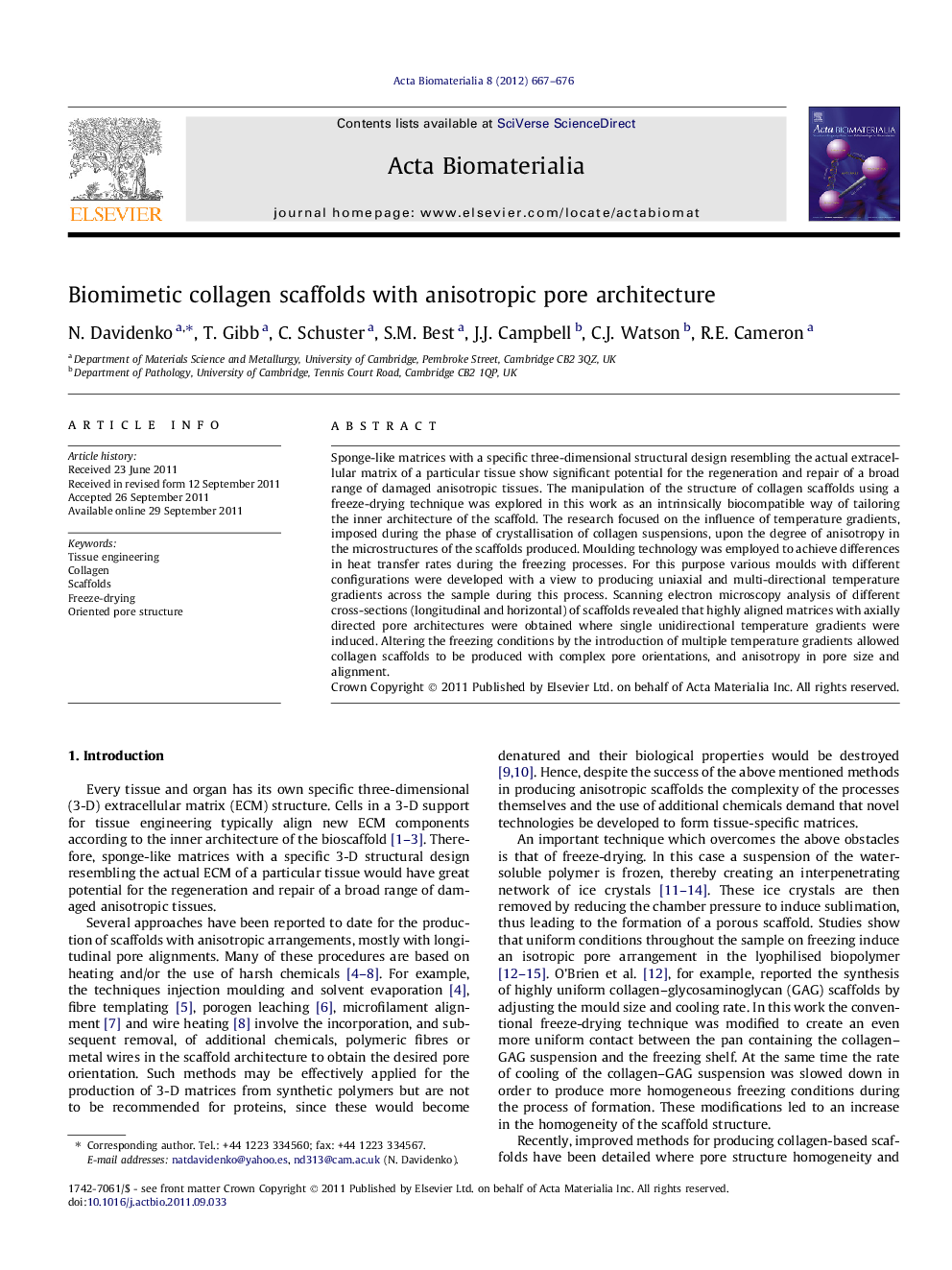| Article ID | Journal | Published Year | Pages | File Type |
|---|---|---|---|---|
| 1468 | Acta Biomaterialia | 2012 | 10 Pages |
Sponge-like matrices with a specific three-dimensional structural design resembling the actual extracellular matrix of a particular tissue show significant potential for the regeneration and repair of a broad range of damaged anisotropic tissues. The manipulation of the structure of collagen scaffolds using a freeze-drying technique was explored in this work as an intrinsically biocompatible way of tailoring the inner architecture of the scaffold. The research focused on the influence of temperature gradients, imposed during the phase of crystallisation of collagen suspensions, upon the degree of anisotropy in the microstructures of the scaffolds produced. Moulding technology was employed to achieve differences in heat transfer rates during the freezing processes. For this purpose various moulds with different configurations were developed with a view to producing uniaxial and multi-directional temperature gradients across the sample during this process. Scanning electron microscopy analysis of different cross-sections (longitudinal and horizontal) of scaffolds revealed that highly aligned matrices with axially directed pore architectures were obtained where single unidirectional temperature gradients were induced. Altering the freezing conditions by the introduction of multiple temperature gradients allowed collagen scaffolds to be produced with complex pore orientations, and anisotropy in pore size and alignment.
